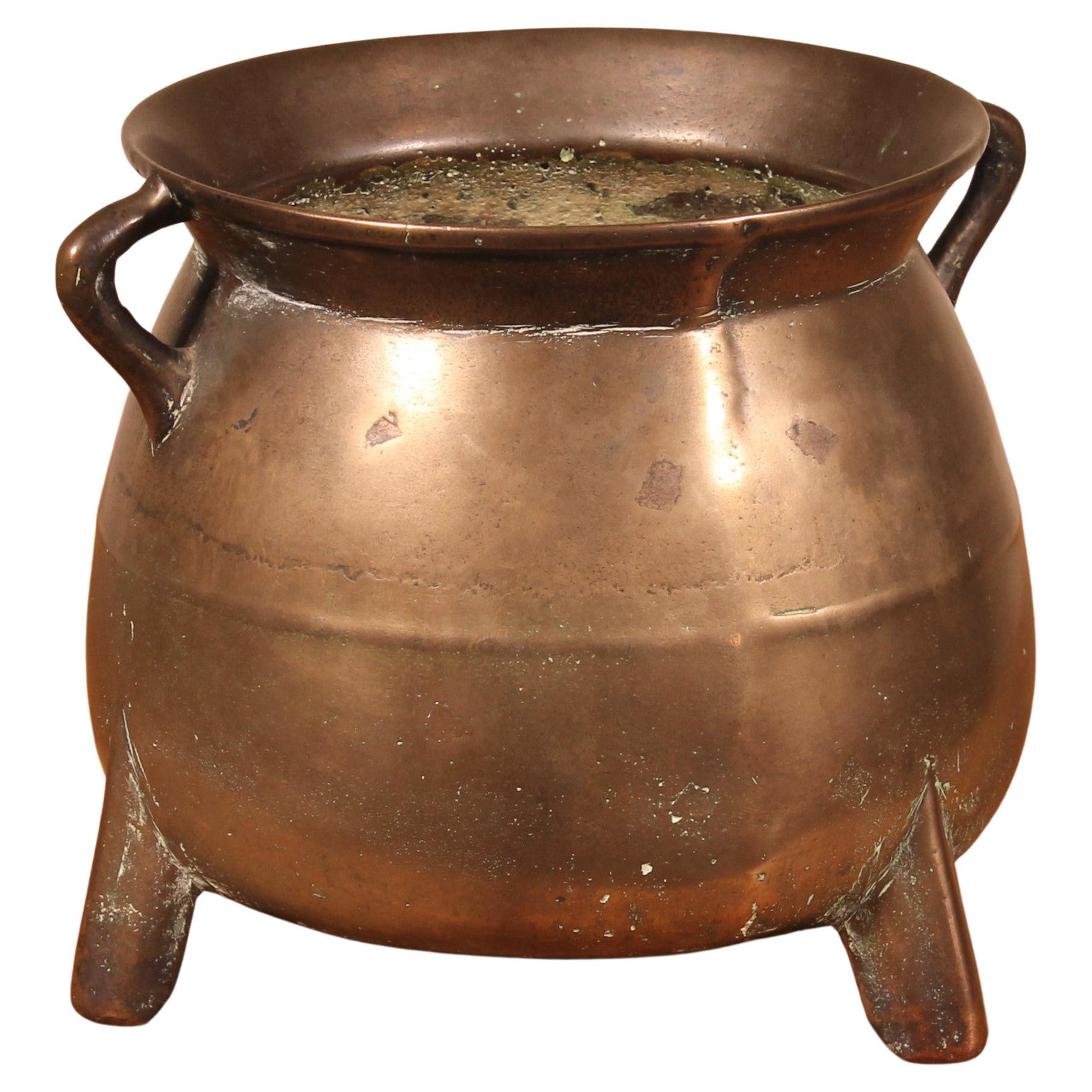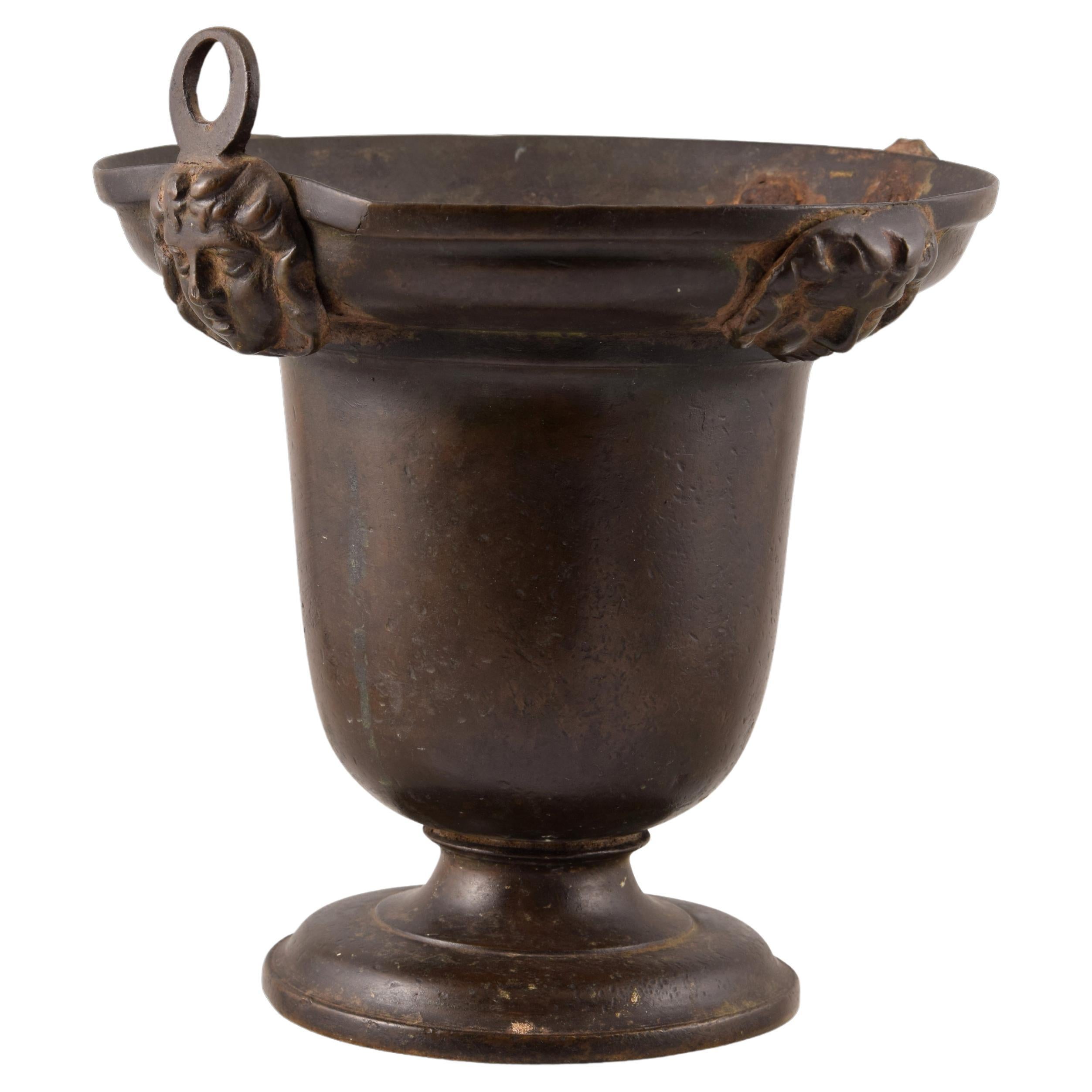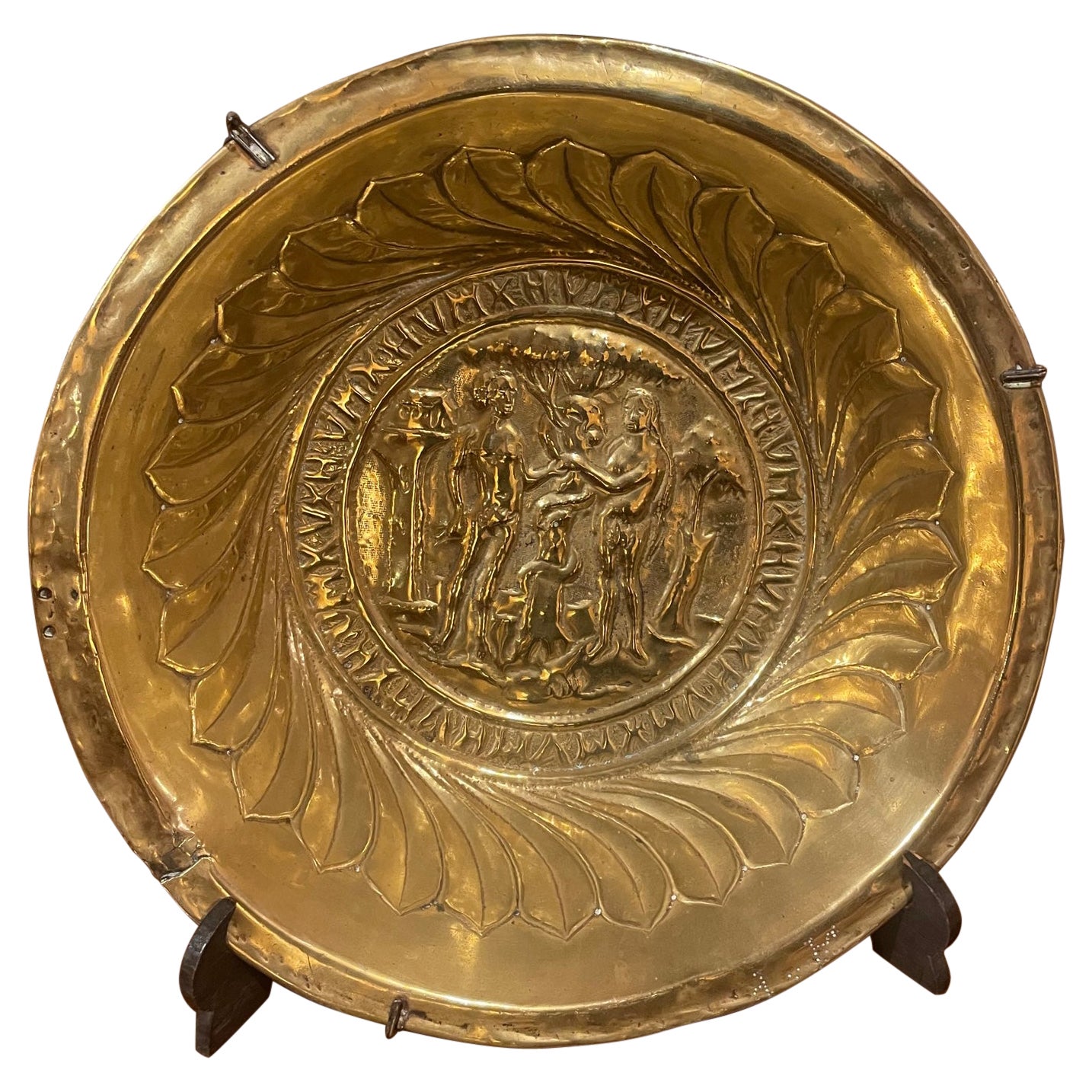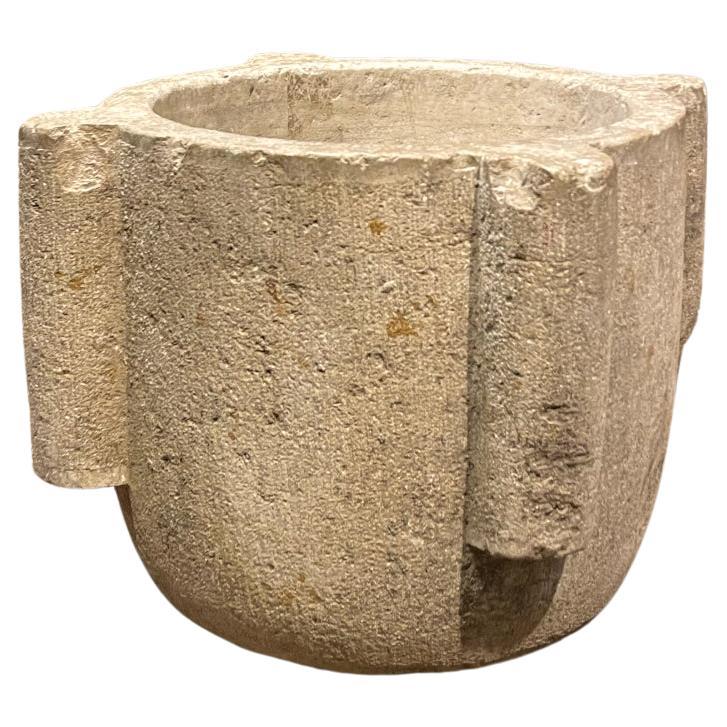Items Similar to Bronze Mortar, Tuscany, Second Half of 16th Century
Want more images or videos?
Request additional images or videos from the seller
1 of 6
Bronze Mortar, Tuscany, Second Half of 16th Century
About the Item
Bronze mortar with garlands, flowers and putti - Tuscany , second half of 17th century.
Measures: height 10
diameter : 13 cm
Artisans and healers used mortars for grinding food, dyes and drugs. The rich friezes on this bronze mortar suggest that it had a ceremonial, rather than merely functional purpose.
- Dimensions:Height: 10 in (25.4 cm)Diameter: 13 in (33.02 cm)
- Style:Renaissance (Of the Period)
- Materials and Techniques:
- Place of Origin:
- Period:
- Date of Manufacture:16th Century
- Condition:Repaired. Wear consistent with age and use. one of the handles has been reinforced.
- Seller Location:Bruxelles, BE
- Reference Number:1stDibs: LU6666231440632
About the Seller
5.0
Vetted Seller
These experienced sellers undergo a comprehensive evaluation by our team of in-house experts.
1stDibs seller since 2022
6 sales on 1stDibs
Typical response time: 4 hours
- ShippingRetrieving quote...Ships From: Bruxelles, Belgium
- Return PolicyA return for this item may be initiated within 3 days of delivery.
More From This SellerView All
- Group of Altarpiece - Antwerpen, 16th centuryLocated in Bruxelles, BEGroup of altarpiece representing the life of a Saint, Saint Renualde? Engraved by the sign of Antwerp hand on the hat of the central character Carved oak, traces of polychromy Fir...Category
Antique 16th Century Belgian Renaissance Figurative Sculptures
MaterialsOak
- 16h century Griffin Head - ItalyLocated in Bruxelles, BEGriffin head Italy, 16th century On a modern metal stand Measures: 20 x 29 x 21 cm (without the stand) The griffin is a legendary creature with the body of a lion, the head an...Category
Antique 16th Century Italian Renaissance Animal Sculptures
MaterialsMarble
- Massacre of the Innocents, Normandy, Late 16th CenturyLocated in Bruxelles, BEThe Massacre of the Innocents Carved oak panel Normandy, late 16th century (Collection labels on the back) Measures: 43,5 x 61 cm.Category
Antique 16th Century French Renaissance Wall-mounted Sculptures
MaterialsOak
- 16th century Brussels tapestry - The Story of DavidLocated in Bruxelles, BE16th century Brussels tapestry The Story of David Brabant, 16th Century Monogram at the bottom left. 320 x 250 cm This splendid Brussels tapestry, crafted from wool and silk during ...Category
Antique 16th Century Belgian Renaissance Tapestries
MaterialsWool, Silk
- renaissance wooden candelabrum and painted cross - Umbria, 16th centuryLocated in Bruxelles, BEBase of a carved wooden candelabrum, polychrome and gilded; cross painted on both sides. Umbria or Tuscany, 16th century 136 x 43,5 x 30 cm (The cross and the base of the candelabrum were later assembled) The base of the candelabrum is intricately carved and adorned with polychrome and gilded finishes. The shafts take on the shape of balusters reminiscent of ancient columns, feature ornate foliage decorations, garlands and winged cherub faces. The feet are crafted in the likeness of lion paws. The base is further embellished with depictions of four saint martyrs, among them Saint Barbara and Saint Catherine of Alexandria. The plasticity of the figures, outlined with strong contour lines, the clear and vibrant colors, are stylistic elements linked to the Umbrian tradition of the sixteenth century.The precisely defined and elegant drawing, along with the clear color palette applied with refined chiaroscuro modulations, became the signature of a style that would leave a lasting mark on the era to come. This is exemplified by a preference for vibrant, multicolored images, accentuated in this case by the use of red and pink in the saint's attire. A notable addition, introduced later, is a polylobed cross painted on both sides. On one side, the Crucifixion is vividly portrayed:The treatment of the corpus itself is in line with High Medieval practice, emphasizing pathos by showing Jesus dead, his arms sagging from the weight of the body. The upper section displaying a pelican pecks at her breast to feed her young with her own blood; a symbol of the sacrifice of Christ on the cross whose body and blood similarly nourishes the celebrant during Mass. The lower part depicts Golgotha. On the reverse side, the Resurrection is artistically presented in a Renaissance iconography, reminiscent of the renowned composition painted by Piero della Francesca, now housed in the Civic Museum of Sansepolcro. In terms of composition, with the frontal depiction of Christ holding the banner, this motif became particularly widespread in central Italy, spanning from Tuscany to Umbria throughout the 16th century.. The double-sided construction suggests that it may also have been carried in liturgical processions. In Umbria from the 14th century, the use of portable crosses painted on both sides had become a widespread practice, aimed at satisfying the monastic clientele that had significantly increased following the establishment of new religious communities. The earliest surviving Tuscan painted crucifix represent Christ as Christus Triumphans, or the “Triumphant Christ” with his head up and eyes open. This form was supplanted in the 13th century with the Christus Patiens, or “Suffering Christ” type who is shown often with his head fallen on his shoulder and his eyes closed, as In our cross. The iconography of the suffering Christ appears to have developed out of a new interest in Christ’s human nature, the development of the feast of Corpus Christi and with increased importance given to the Eucharist. The process of humanizing the figure of Christ reaches its peak with the abandonment of all the previous expressive conventions in favor of more realistic details we can observe in this Crucifix, such as the swollen belly, the arms stretched to the limit of muscle tearing, the body falling heavily forward, the abundant blood on the wounds, and the cross firmly embedded in the rock of Calvary. It's worth noting that Renaissance candelabra...Category
Antique 16th Century Italian Renaissance Figurative Sculptures
MaterialsWood, Giltwood
- Virgin and the Child, Mosan Region, Second Half of 13th CenturyLocated in Bruxelles, BEA polychrome sculpture depicting the Virgin and the Child Mosan region, second half of 13th century Polychrome wood 73 x 29 X 12 cm Provenance : Former Belgian private collection from the beginning of the 20th century This remarkable early artwork portrays the Enthroned Virgin and Child, also known as Sedes Sapientiae, which translates to the 'Seat of Wisdom...Category
Antique 15th Century and Earlier Belgian Medieval Figurative Sculptures
MaterialsWood
You May Also Like
- SECOND HALF OF THE 16th CENTURY POLYCHROME MAIOLICA PLATELocated in Firenze, FISplendid plate in polychrome glazed majolica in yellow, blue, green and manganese. The plate has a wavy rim which gives it the name "crespina," and in the center it is adorned with t...Category
Antique 16th Century Italian Renaissance Decorative Dishes and Vide-Poche
MaterialsMaiolica
- Bronze Pot, 16th CenturyLocated in Brussels, BrusselsSuperb Flemish Renaissance bronze pot from the 16th century. Superb patina and in very good condition.Category
Antique 16th Century Belgian Renaissance Decorative Bowls
MaterialsBronze
- Bronze Situla, 16th CenturyLocated in Madrid, ESAcetre. Bronze. Century XVI. Bronze piece that has a circular foot, and a circular body, with an outwardly hollowed mouth at the top, and a decoration in relief in this last area o...Category
Antique 16th Century European Renaissance Religious Items
MaterialsBronze
- Bronze Pharmacy Mortar Italy-17° CenturyLocated in Brussels, BrusselsElegant bronze mortar from the 17 century from Italy dated 1630. Really rare mortar due to his big size. In very good condition and beautiful patina.Category
Antique 17th Century Italian Renaissance Scientific Instruments
MaterialsBronze
- Rare Offering Basket or Basin Germany-16th Century in BrassLocated in Brussels, BrusselsRare basin (We think it was the basin to wash the feet on hollyThursday) in brass Rare plat of the german renaissance since it is rather a basin which is much rarer than a offering basket...Category
Antique 16th Century Renaissance Decorative Baskets
MaterialsBrass
- 16th Century Spanish White Stone MortarLocated in BARCELONA, ESEmbark on a gastronomic journey through time with our unparalleled culinary treasure, the Exquisite 16th Century Spanish White Stone Mortar. This ...Category
Antique 16th Century Spanish Decorative Bowls
MaterialsStone
Recently Viewed
View AllMore Ways To Browse
Second Hand Used Furniture
Antique Furniture Second Hand
Second Hand Used Office Furniture
Antique Dye
Hand Forged Bronze
16th Century Cast Bronze
Antique Drugs
Antique Brass Kitchen Scales
Antique Brass Thermometers
Antique Brass Thermometer
Wooden Gears
Black Barometer
French Telescope
Antique Medical Instruments Medical Instruments
Antique Furniture Rochester
Antique Medical Instruments
Aneroid Barometer
Telescope With Tripod





